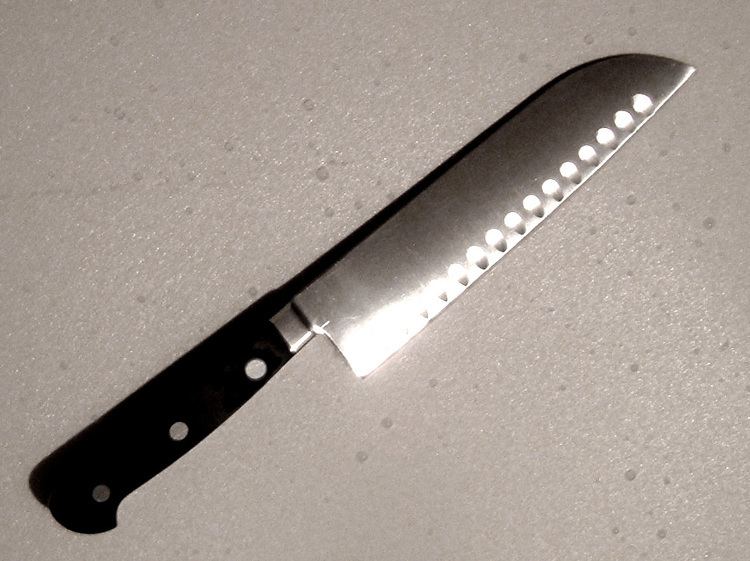Knife indentation is done away from the edge of a kitchen knife. A knife most simply has either a rectangular or wedge-shaped cross-section (saber grind vs. flat grind), but may also have indentations, whose purpose is to reduce adhesion of the food to the blade. This is widely found in Japanese knives, and in the West is particularly found in meat carving knives, though also in knives for soft cheese, and some use for vegetables.
These indentations take many forms:
Granton knives have semi-circular scallops ground into the edge that alternate on either side of the knife and extend from the edge to the middle of the blade. This design was developed and patented in 1928 by Wm.Grant & Sons Ltd A similar design, kullenschliff (kulle is Swedish for hill (or -more likely- a misspelling of the German word "Kuhle" meaning "hollow" or "deepening"); schliff meaning "cut" or grind in German), has oval scallops (kuhlen) hollowed-out of one or both sides of the blade above the edge. The Granton design is normally found on meat carving knives but have recently appeared on other types of knives, especially Western variations of the Japanese santoku. The indentations require a certain thickness, so they are more frequently used on thicker, softer blades, rather than on thin, hard ones. The design of scallop-sided blades is an attempt to ease the cutting and separation of meats, cheese, and vegetables.Urasuki is a common feature of Japanese kitchen knives. While Japanese kitchen knives initially appear as a simple chisel grind (flat on the side facing the food, angled on the other), the apparently flat side is subtly concave, to reduce adhesion, and, further, the apparent chisel cut of the edge is actually a small bevel, as otherwise the edge would be weakened by the concave area above.Holes may also be found in a blade, to reduce adhesion still further. These are most found in knives for soft cheese, which is particularly soft and sticky.
